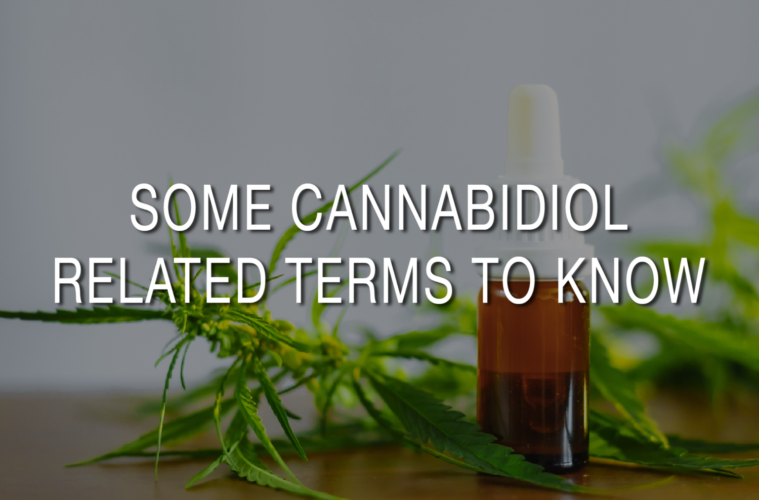This article was originally published on Safe CBD For Me. To view the original article, click here.
Cannabidiol is among the trendiest products in the world. There has been much research into CBD, and the outcome is promising. For instance, there is scientific evidence to hint that CBD can help to ease inflammation and pain, plus treat anxiety and stress.
According to what the World Health Organization says, CBD is a safe, well-tolerated substance. The ever-growing CBD sector can be worth billions in the near future. As per a report by market research company, Brightfield Group, CBD could be worth $22 billion in two years.
Here is a list of terms you have to be aware of concerning this trendy substance.
Psychoactive
Short for cannabidiol, CBD, is among the two major phyto-cannabinoids present in industrial hemp, the other one being tetrahydrocannabinol. The naturally occurring substance from hemp is in many different products, including oils and edibles. This means you have many different ways to consume CBD. You will usually not feel intoxicated by consuming CBD, like you would with THC. However, in rare cases where one consumes too much CBD, in effect excessive THC, he or she could get a psychoactive effect.
As per the definition of Merriam-Webster, the term ‘psychoactive’ translates to ‘affecting the mind’. In a more general sense and in this context, it refers to the fact that THC is mind-altering. You will also come across other terms with a similar meaning, such as ‘psychotropic’. All these terms mean one thing: taking an excessive amount of THC through a CBD product or a hemp derivative would alter your reality. This effect may be what you want by consuming cannabis, but it is undesirable in the case of CBD consumption for a medical purpose. So just be careful about the amount of THC you consume.
Isolate, Broad-Spectrum And Full-Spectrum
When shopping for or searching online for a CBD product, you will come across these three terms. Here is a basic overview of those. A CBD isolate refers to a product with 99% pure cannabidiol, and it is thought of as the purest CBD form. A broad-spectrum CBD has less cannabidiol content in it, and it contains some of the other medical marijuana-derived substances except for tetrahydrocannabinol. Unlike CBD isolate and broad-spectrum CBD, a full-spectrum cannabidiol product contains THC. It is still important to note that the ‘full-spectrum’ type item only has 0.3% THC in it.
This amount of THC is what differentiates it from the two other forms of CBD. Many industry experts consider it to be the best CBD form because it contains relatively more hemp substances than the other two. Now that you know this, you can make better CBD purchasing decisions.
Terpenes
The term ‘terpenes’ refer to compounds that give cannabis its aroma and flavor. There are many of these organic compounds in cannabis sativa. The limonene terpene has a citrus-like aroma and flavor, and it is thought to be uplifting. There is a clove-like aroma to the myrcene terpene, which is considered relaxing. That said, there is not enough well-controlled research to say with conviction that each of these terpenes can give the aforesaid mood-altering effects.
Bioavailability
In this context, the term ‘bioavailability’ refers to the percentage of cannabidiol dose that gets into the bloodstream. It is about how quickly cannabidiol enters the flowing blood to start producing the intended results.
You will take a particular dose of CBD, but the body may not always absorb precisely that much. It depends on your form of CBD and/or method of consumption. Consuming CBD through the mouth, or orally, means low CBD bioavailability. This is because it takes time for CBD to pass through the digestive system and take effect. When you inhale CBD, on the other hand, it will bypass your digestive tract, plus the liver, so it will take effect relatively more quickly. So inhaling cannabidiol is a more effective way of consumption to confirm a high CBD bioavailability. On the flip side: the effects through inhaling CBD will not last just as long as with other ways of consuming CBD.
Related: Can CBD oil help your pets? Click here to learn more.
Micro-Dosing
The newest method of using cannabidiol is micro-dosing. It has gained much popularity among both suppliers and consumers of CBD by now.
A micro-dose refers to a small, starter-friendly dose of cannabidiol. Micro-dosing is about taking the product in small doses at different times of the day. By consuming CBD thus, you will not go above the recommended dose for the day, unless you deliberately do so. You will only split that dose, like say 30 milligrams of CBD, into multiple micro-doses (such as 6 MG five times).
Cannabidiol can have different effects according to how much one consumes. Consuming your daily suggested dose of CBD right away will benefit you only for the short term. Conversely, micro-dosing lets you enjoy CBD’s effects longer. It is thought that consuming CBD in this way makes the user more alert.
Advertising disclosure: We may receive compensation for some of the links in our stories. Thank you for supporting LA Weekly and our advertisers.


